
In Search of Dragonflies
Wednesday, August 23, 2017
By: Kate Brooker - Adirondack Council Clarence Petty Intern
In July, my colleague Jackie and I had the opportunity to experience field biology first hand when Matt Schlesinger from the New York Natural Heritage Program (NYNHP) invited us and a few others to help him with a rare dragonfly survey in a bog in the Debar Mountain Wild Forest. I came away with the realization that field biology is not for the faint of heart. It is a career that requires patience, perseverance, and, most importantly, a really positive attitude. I now appreciate the work of field biologists even more.
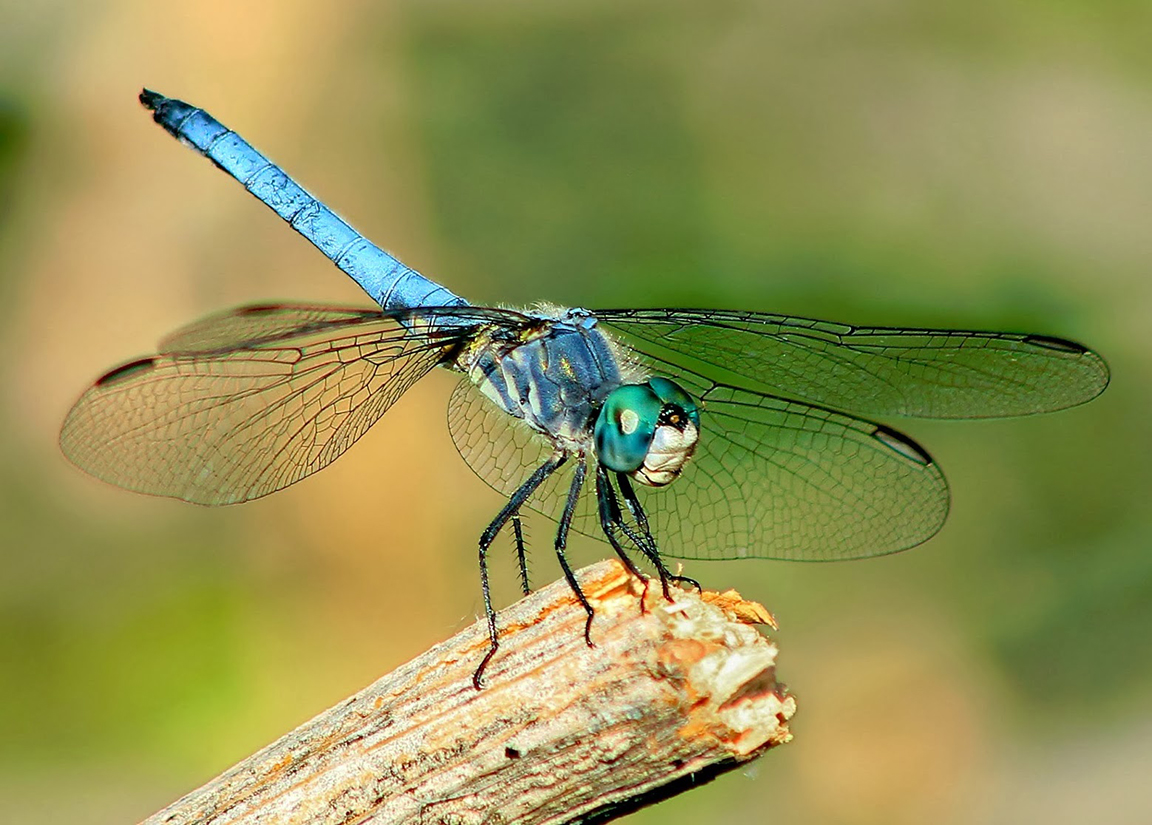 Blue Dasher Dragonfly
Blue Dasher Dragonfly
(Pachydiplax longipennis)
When we received the invitation, I was excited. I had considered becoming a field biologist when I first started college, but found myself more interested in rocks than living creatures. The day for the survey had to be switched last minute due to weather as dragonflies prefer sunny, warm days (which have been difficult to come by this summer), so only Jackie and I were able to help with the survey on the rescheduled day.
Before I recount my dragonfly collecting adventure, it’s important for me to establish what NYNHP is and the work it does. The NYNHP is a partnership between the SUNY College of Environmental Science and Forestry and the Department of Environmental Conservation, whose mission is to provide biodiversity information to facilitate conservation in New York State. It uses field inventory, mapping, database management, and statistical analysis and modeling to gather information on the status and location of rare species and natural communities. The NYNHP maintains New York's most comprehensive database on this information and shares it with public and private partners working in natural resource conservation. This helps guide land-use management and prioritize which species and communities need protecting.
Matt Schlesinger, our guide for the day, is Chief Zoologist for the NYNHP and leads the zoology component of the program, currently including the work of eight biologists. He and his team are tasked with understanding New York's animal biodiversity, including everything from moths to frogs to whales. The NYNHP also involves community ecologists, botanists, invasive species biologists, database specialists, and information staff.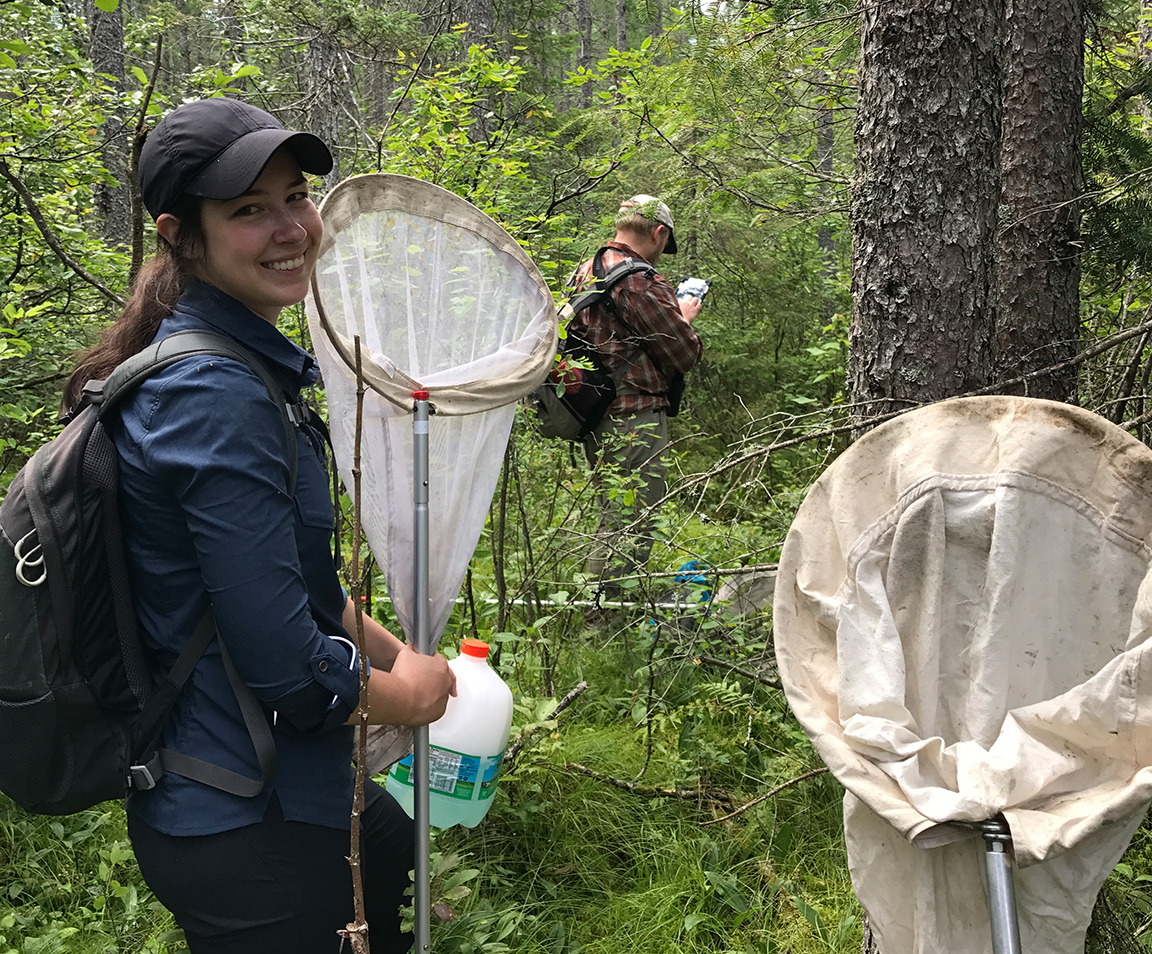 Jackie Bowen Conservation Fellow at the Adirondack Council and
Jackie Bowen Conservation Fellow at the Adirondack Council and
Matt Schlesinger from the New York Natural Heritage Program
Jackie and I met Matt a few miles north of Paul Smith’s College on a bright, sunny morning in July. I was excited to spend the day outside, especially because, for what felt like the first time all summer, it wasn’t raining. Our goal was to reach a bog about three quarters of a mile from the road where we would attempt to catch and then identify rare species of dragonflies. Matt had mentioned that there would be a moderate amount of bushwhacking, so we came prepared: covered head-to-toe in clothing so as to avoid scratches from trees and shrubs and bites from insects. Matt also said we would be getting wet at least up to our knees, so I decided on older hiking shoes. Once we were all equipped with dragonfly nets, we headed out in search of the bog.
Matt used an aerial photo and compass on a tablet device to guide us. At this point, we were entering into bushwhacking territory of the Wild Forest. There were no trails or signs directing us to the exact location of the bog, just Matt’s knowledge of the location and his tablet. About a half hour into the trip, we were confronted by a large alder tree area. Alder trees grow in dense shrubs, so pushing through them was difficult. We decided to walk along the edge of the alder trees, hoping that they would eventually subside and we would be able to access the bog. Unfortunately, as we continued to walk, the wall of alder trees did not break. We agreed the only course of action was to go straight through the trees. And so we went, clawing our way through the dense shrubbery in the hopes that the bog would be right on the other side. Unfortunately, it was not. Before us lay a large expanse of evergreen trees, black spruce and tamarack trees.
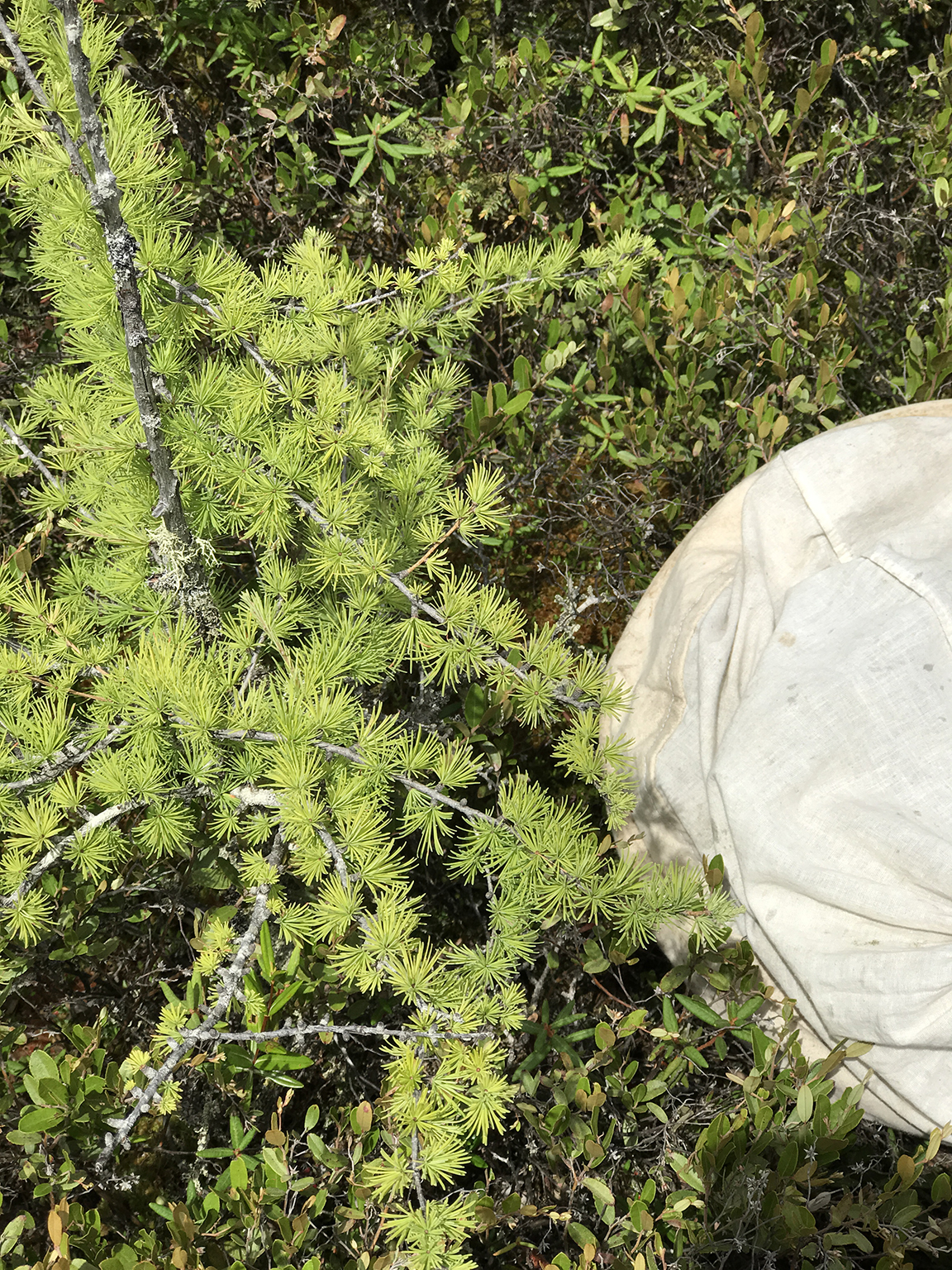 Tamarack
Tamarack
At first I thought, “Hey, nothing could be worse than those alder trees.” But, I was wrong. Despite smelling like fresh pine, a thousand pine needles straight to the face is not the best feeling in the world. Matt assured us that this was not a typical day in the field. Usually, one can simply park on the side of a road next to a bog, get out of the car and start swinging their net to catch specimen. Nevertheless, I was determined to find the bog and catch a dragonfly. And so, on we went, through dense forest until we finally came to the bog we had searched out for so long.
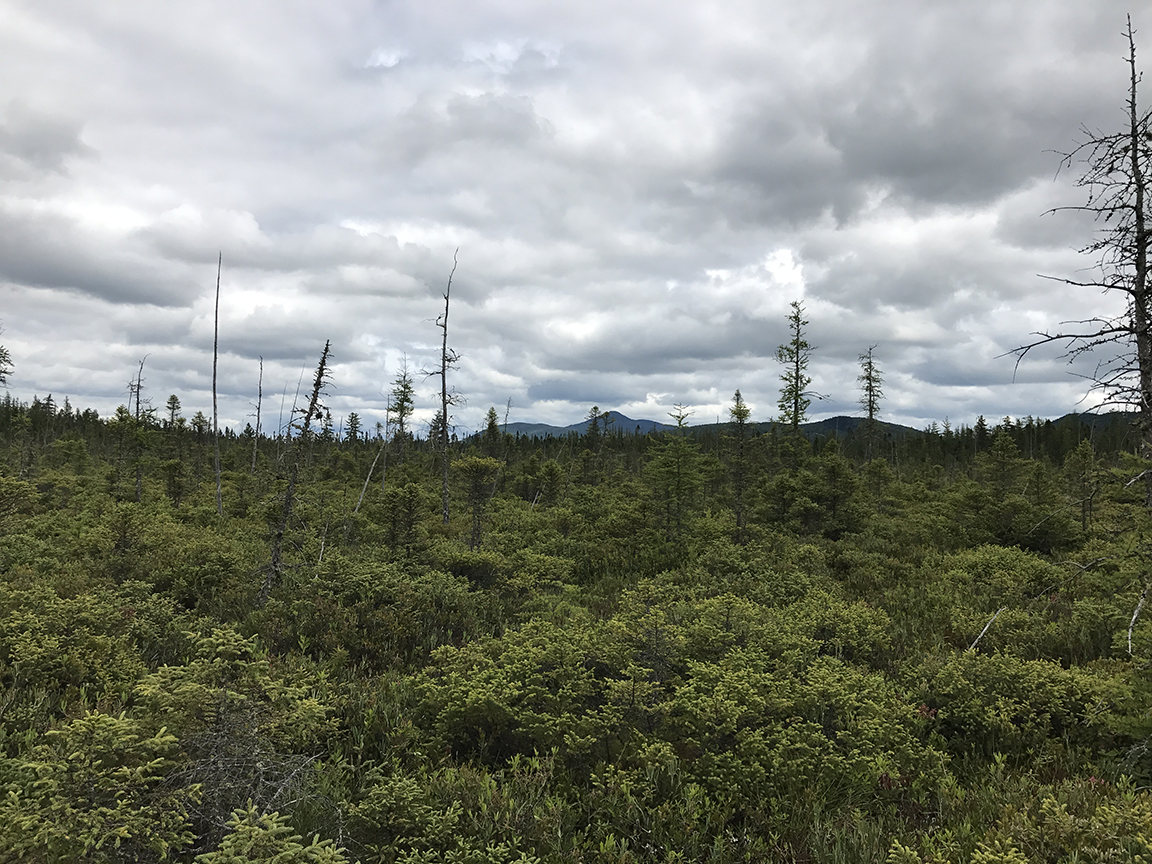 Bog
Bog
Matt gave us a quick tutorial on how to use the dragonfly nets. With my newly acquired skills, I was ready to catch some dragonflies. Unfortunately for us, the temperature had cooled and the sky became overcast. Dragonflies prefer the sun, and sadly, were choosing not to take flight. In total, I saw two dragonflies and caught none. Matt, however, was able to turn his dragonfly survey into a pollinator survey, catching a few pollinators instead. Although Jackie and I came away empty handed, Matt was pleased to have been able to survey pollinators, another Adirondack group under threat from changing climate and dwindling habitat.
When we finally got back to our cars at the end of the day, I was exhausted, wet and ready for a nap. But I was also inspired by the experience. I now have a strong appreciation for the intense dedication and mental stamina required of field biologists. Without these dedicated individuals, there would be a significant lack of knowledge about many species, their habitats and what is required to protect them. So if you ever find yourself in the middle of a bog and see a dragonfly buzzing about, remember that there are field biologists like Matt who are working very hard to ensure the livelihood of these and many other wild creatures. But if I never see a bog again, I won’t be upset.
Would you like to comment on what you've read or viewed? We'd love to hear from you. Please click to send us a message.
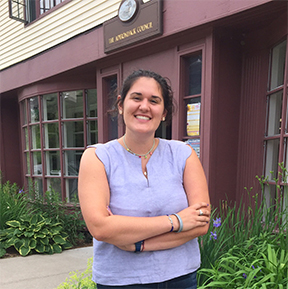
Kate Brooker is our Clarence Petty Intern in our Elizabethtown office. She graduated this past spring from St. Lawrence University with a degree in Chemistry and Geology. Kate’s interest in science and policy comes from her strong connection to the Adirondack Park. This summer, while working at the Council, she hopes to expand her understanding of conservation legislation as it applies to the Park. When Kate is not working, you can find her skiing, hiking, and trying to improve her fly fishing skills.




